 Facebook
Facebook
 X
X
 Instagram
Instagram
 TikTok
TikTok
 Youtube
Youtube
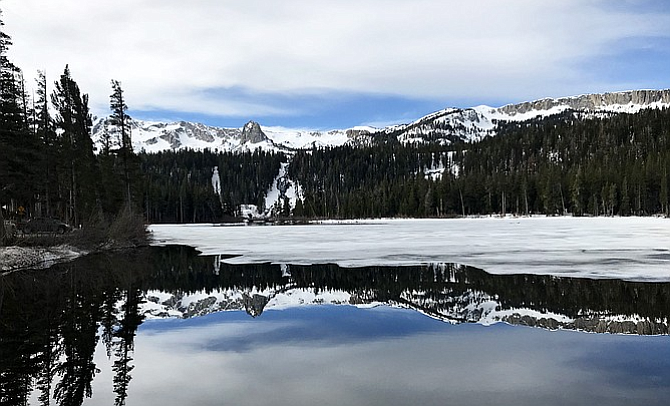
Springtime in the Western United States generally means snow melt and a lot of muddy conditions. It may seem like an odd time to visit a mountain town... but it's just the opposite for the traveler looking to explore and experience a slower, less spendy side of Mammoth Lakes.
The longer, warmer days, combined with the typically dry valleys and snowcapped peaks, provide the perfect venue for taking on a multitude of activities in one day.
Mammoth Mountain is known as the capital of spring skiing in North America — it's one of the only major resorts in the country to stay open through the spring months. And on rare occasions the slopes remain open into the summer. Unlike many other North American ski resorts, Mammoth Mountain is operational until the snow is gone. Last year, in fact, following a record snowfall, the mountain had runs open until August.
An experience that can feel intimidating in the winter is much more approachable in the springtime. Shorter lines, softer snow and warmer temps make it the ideal time for beginners.
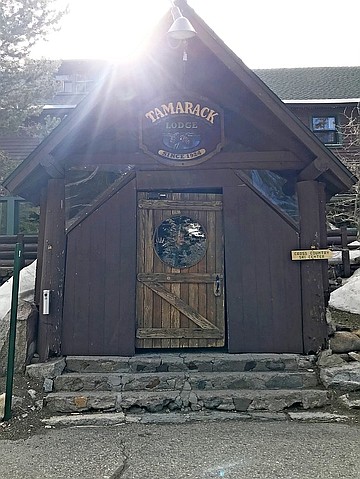
If downhill skiing or snowboarding just aren't your thing, there are still activities in Mammoth to can get you out in the springtime snow. Mammoth Lakes provides visitors with a host of other activities that are better enjoyed in warmer temperatures.
Less expensive than alpine skiing and suited to virtually any athletic ability, cross country skiing is a great option to get you out in the fresh Mammoth mountain air. Tamarack Lodge is the local starting point for a cross-country ski adventure. A charming resort built in the 1920s, Tamarack Lodge sits alongside the serene Twin Lakes and is home to the Tamarack Cross-Country Ski Center. Depending on conditions, rentals, lessons and tours are available to visitors.
Perfect for families, snowshoeing is an accessible activity for people of all ages and abilities. Layer up when you hit the trails — but snowshoeing is definitely a workout, and with springtime temperatures hanging in the 60s, you may want to strip down to just a t-shirt. You can scoop up some rented snowshoes in town and make your way to Mammoth Mountain Resort to hike Minaret Vista located just behind the main lodge. Be on the lookout for skiers, snowboarders and snowmobilers as they traverse the early parts of this trail.
With never-ending photo ops and scenic vistas, there's a lot to explore in Mammoth Lakes. Each time I chatted with a friendly local they pointed me in the direction of a new "must see."
Along State Route 201, on your way up to Mammoth Mountain’s main lodge, be on the lookout for the Earthquake Fault. A short walk from the parking lot gives way to a 20-minute loop around this natural wonder. Around 600 years ago, intense volcanic activities created a deep fissure in the earth. Visitors can walk above the fracture that's a few hundred feet long and 60 feet deep in spots.
Since time was limited, we opted to have guides at Mammoth All Weather Shuttle show us the views. We were in good hands with Lucas; once a member of the Eastern Sierra Search and Rescue team, he knew his stuff.
Our four-hour tour began in the Lakes Basin area of Mammoth Lakes, with Lucas giving us a knowledgeable account of the region’s historic mining past and rich geological history. Not far from town, the Mammoth Lakes Basin is a playground of outdoor activities for every season.
Next we were on to the fisherman’s paradise, Hot Creek. Fishermen can opt to stay at the Hot Creek Fly Fishing Ranch’s cottages located directly on the stream. Founded in 1948, it is the only private fly fishing ranch open to the public in the Eastern Sierras. Hot Creek rates as one of the top fly fisheries in the Western U.S. The ranch opens for the season at the end of April and runs through November.
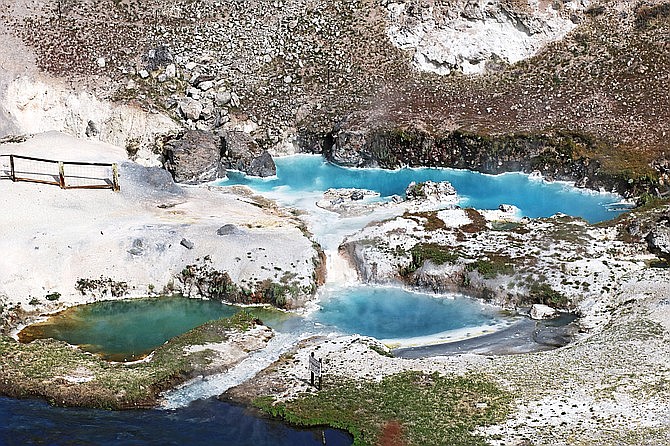
But Hot Creek isn’t just about fishing. Down a gravel road just beyond the Hot Creek Ranch and Hot Creek Hatchery Facility, you'll find the Hot Creek Geological Site. From here we took a short hike down to get a closer look at the brilliant blue, bubbling hot springs that sit across the gently meandering creek. The impressively blue water, superheated from molten rock underground, have caused injury and severe burns, consequently making swimming off limits.
We then made our way to one of the oldest lakes in North America, one dubbed California’s Dead Sea: Mono Lake. At the center of water-rights legal battles between the region and Los Angeles County, Mono Lake is a large, shallow, and otherworldly sight to behold. Surrounded by desert peaks, volcanoes and the Sierra Nevada mountain range, the lake has been the backdrop in many movies, including Clint Eastwood’s High Plains Drifter. The lake’s island is also home to millions of migrating birds in the springtime, making it a premier birding destination.
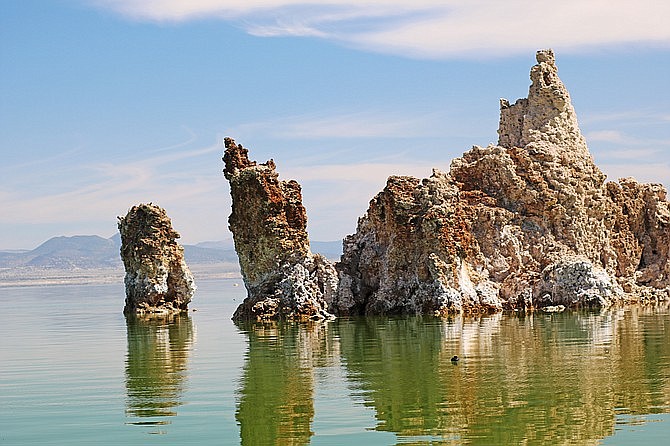
Due to a lack of an outlet, the lake water contains very high levels of salt — three times the levels found in ocean water. Freshwater springs pump calcium-laden water up from the lake's bottom, and the reaction
with the salt water create rocks that build up like stalagmites in a cave. This process creates cream-colored "tufa" towers, which begin under water and gradually climb to create oddly shaped natural columns. I found the formations and the lake to be one of the most unique wonders I'd ever experienced. But not everyone thinks so: Mark Twain called the lake a “lifeless, treeless, hideous desert...the loneliest place on earth.”
Not far from Mono Lake, wild horses roam the desert highlands. I consider this a truly special place, regardless of Twain’s review.
From snow-crested mountains to budding trees and wildflowers to the brilliance of autumn, the scenic, winding, 16-mile June Lake Loop should be added to a Mammoth itinerary in any season. Just a short drive from Mono, June Lake Loop has been referred to as the “Switzerland of California” and is a scenic bypass to June, Gull, Silver and Grant Lakes.
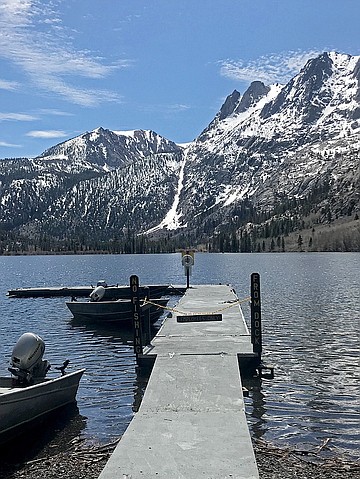
Snuggled at the base of Carson Peak, the 110-acre Silver Lake is a popular destination for boaters, swimmers and kayakers. The Silver Lake Resort has provided accommodations to anglers hoping to take advantage of the lake’s healthy trout population for over a century. The area is like something out of a painting. Tom Cruise’s 2013 movie Oblivion was filmed on Silver Lake.
When we reached the final and namesake lake of the June Lake Loop we were hungry. We completed our tour with a beer at June Lake Brewing and some creative tacos from the resident Hawaiian fusion food truck, Ohanas395.
I was told by many during my visit that spring is some type of secret season in Mammoth — from hikes to fly fishing to mellow snow activities, and with virtually no lines anywhere and a much slower pace in town, there's a strong case to be made to visit now!


Springtime in the Western United States generally means snow melt and a lot of muddy conditions. It may seem like an odd time to visit a mountain town... but it's just the opposite for the traveler looking to explore and experience a slower, less spendy side of Mammoth Lakes.
The longer, warmer days, combined with the typically dry valleys and snowcapped peaks, provide the perfect venue for taking on a multitude of activities in one day.
Mammoth Mountain is known as the capital of spring skiing in North America — it's one of the only major resorts in the country to stay open through the spring months. And on rare occasions the slopes remain open into the summer. Unlike many other North American ski resorts, Mammoth Mountain is operational until the snow is gone. Last year, in fact, following a record snowfall, the mountain had runs open until August.
An experience that can feel intimidating in the winter is much more approachable in the springtime. Shorter lines, softer snow and warmer temps make it the ideal time for beginners.

If downhill skiing or snowboarding just aren't your thing, there are still activities in Mammoth to can get you out in the springtime snow. Mammoth Lakes provides visitors with a host of other activities that are better enjoyed in warmer temperatures.
Less expensive than alpine skiing and suited to virtually any athletic ability, cross country skiing is a great option to get you out in the fresh Mammoth mountain air. Tamarack Lodge is the local starting point for a cross-country ski adventure. A charming resort built in the 1920s, Tamarack Lodge sits alongside the serene Twin Lakes and is home to the Tamarack Cross-Country Ski Center. Depending on conditions, rentals, lessons and tours are available to visitors.
Perfect for families, snowshoeing is an accessible activity for people of all ages and abilities. Layer up when you hit the trails — but snowshoeing is definitely a workout, and with springtime temperatures hanging in the 60s, you may want to strip down to just a t-shirt. You can scoop up some rented snowshoes in town and make your way to Mammoth Mountain Resort to hike Minaret Vista located just behind the main lodge. Be on the lookout for skiers, snowboarders and snowmobilers as they traverse the early parts of this trail.
With never-ending photo ops and scenic vistas, there's a lot to explore in Mammoth Lakes. Each time I chatted with a friendly local they pointed me in the direction of a new "must see."
Along State Route 201, on your way up to Mammoth Mountain’s main lodge, be on the lookout for the Earthquake Fault. A short walk from the parking lot gives way to a 20-minute loop around this natural wonder. Around 600 years ago, intense volcanic activities created a deep fissure in the earth. Visitors can walk above the fracture that's a few hundred feet long and 60 feet deep in spots.
Since time was limited, we opted to have guides at Mammoth All Weather Shuttle show us the views. We were in good hands with Lucas; once a member of the Eastern Sierra Search and Rescue team, he knew his stuff.
Our four-hour tour began in the Lakes Basin area of Mammoth Lakes, with Lucas giving us a knowledgeable account of the region’s historic mining past and rich geological history. Not far from town, the Mammoth Lakes Basin is a playground of outdoor activities for every season.
Next we were on to the fisherman’s paradise, Hot Creek. Fishermen can opt to stay at the Hot Creek Fly Fishing Ranch’s cottages located directly on the stream. Founded in 1948, it is the only private fly fishing ranch open to the public in the Eastern Sierras. Hot Creek rates as one of the top fly fisheries in the Western U.S. The ranch opens for the season at the end of April and runs through November.

But Hot Creek isn’t just about fishing. Down a gravel road just beyond the Hot Creek Ranch and Hot Creek Hatchery Facility, you'll find the Hot Creek Geological Site. From here we took a short hike down to get a closer look at the brilliant blue, bubbling hot springs that sit across the gently meandering creek. The impressively blue water, superheated from molten rock underground, have caused injury and severe burns, consequently making swimming off limits.
We then made our way to one of the oldest lakes in North America, one dubbed California’s Dead Sea: Mono Lake. At the center of water-rights legal battles between the region and Los Angeles County, Mono Lake is a large, shallow, and otherworldly sight to behold. Surrounded by desert peaks, volcanoes and the Sierra Nevada mountain range, the lake has been the backdrop in many movies, including Clint Eastwood’s High Plains Drifter. The lake’s island is also home to millions of migrating birds in the springtime, making it a premier birding destination.

Due to a lack of an outlet, the lake water contains very high levels of salt — three times the levels found in ocean water. Freshwater springs pump calcium-laden water up from the lake's bottom, and the reaction
with the salt water create rocks that build up like stalagmites in a cave. This process creates cream-colored "tufa" towers, which begin under water and gradually climb to create oddly shaped natural columns. I found the formations and the lake to be one of the most unique wonders I'd ever experienced. But not everyone thinks so: Mark Twain called the lake a “lifeless, treeless, hideous desert...the loneliest place on earth.”
Not far from Mono Lake, wild horses roam the desert highlands. I consider this a truly special place, regardless of Twain’s review.
From snow-crested mountains to budding trees and wildflowers to the brilliance of autumn, the scenic, winding, 16-mile June Lake Loop should be added to a Mammoth itinerary in any season. Just a short drive from Mono, June Lake Loop has been referred to as the “Switzerland of California” and is a scenic bypass to June, Gull, Silver and Grant Lakes.

Snuggled at the base of Carson Peak, the 110-acre Silver Lake is a popular destination for boaters, swimmers and kayakers. The Silver Lake Resort has provided accommodations to anglers hoping to take advantage of the lake’s healthy trout population for over a century. The area is like something out of a painting. Tom Cruise’s 2013 movie Oblivion was filmed on Silver Lake.
When we reached the final and namesake lake of the June Lake Loop we were hungry. We completed our tour with a beer at June Lake Brewing and some creative tacos from the resident Hawaiian fusion food truck, Ohanas395.
I was told by many during my visit that spring is some type of secret season in Mammoth — from hikes to fly fishing to mellow snow activities, and with virtually no lines anywhere and a much slower pace in town, there's a strong case to be made to visit now!
Comments